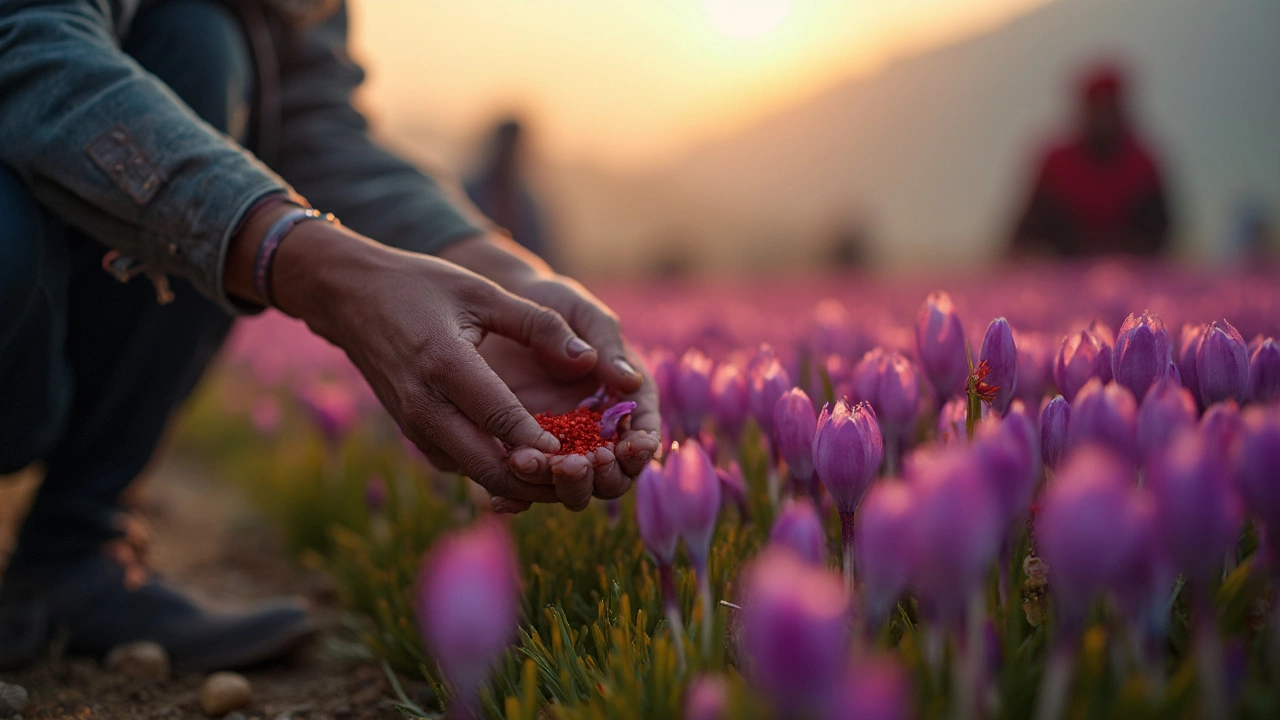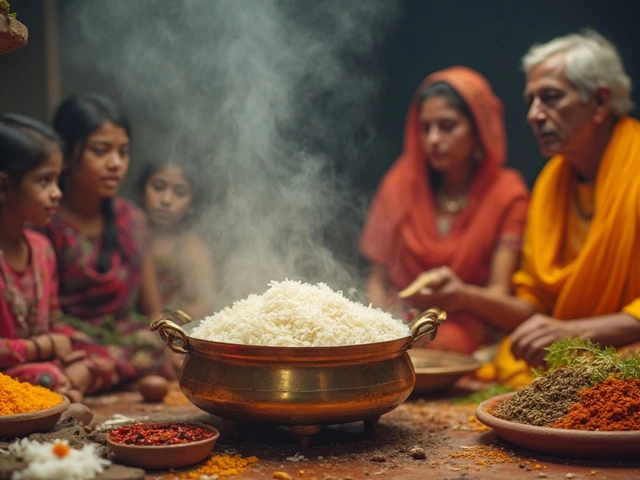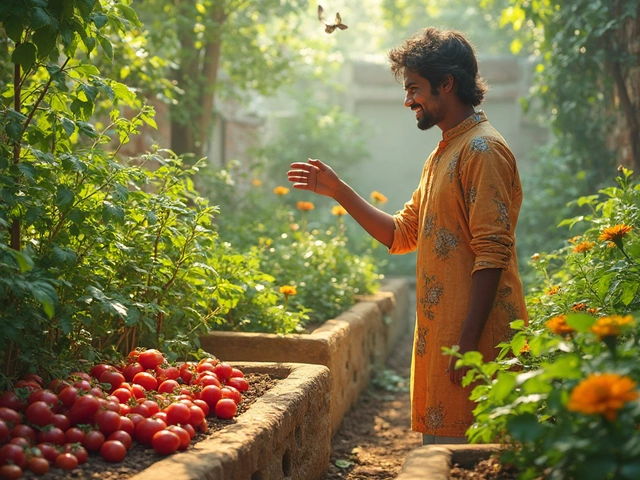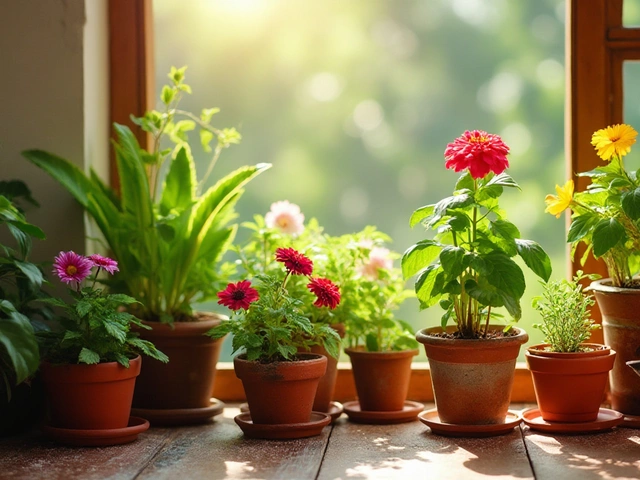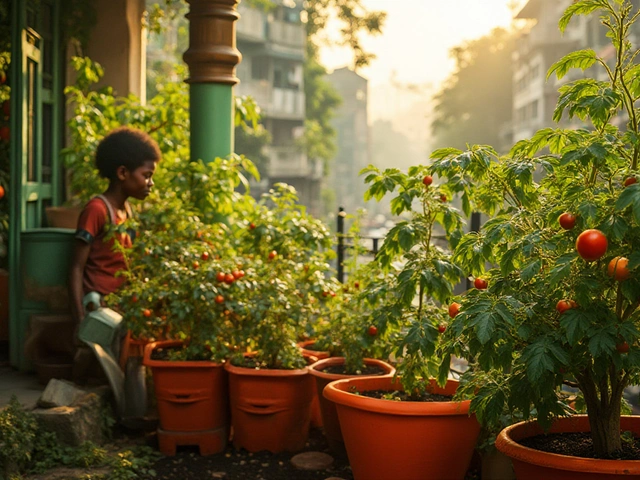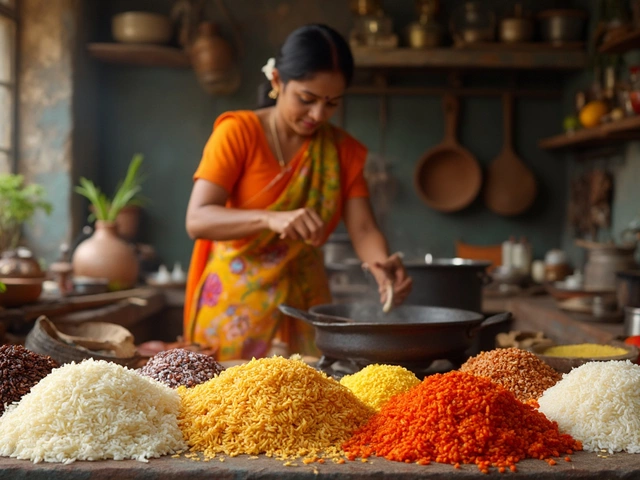Whenever people talk about the most expensive flower in India, one answer always pops up—Saffron Crocus, or what most folks just call the saffron flower. Saffron isn’t just for fancy biryanis or gourmet dishes. It starts out as a beautiful, purple flower growing mostly in chilly fields of Kashmir, where even a handful can cost you more than a monthly grocery bill.
But the price isn’t just because of looks or tradition. One saffron flower gives you only three little red stigmas—those thin threads that pack all the value. And picking them? It’s all done by hand, super early in the morning while the petals are still dew-soaked and delicate. Imagine needing tens of thousands of flowers just to get a kilo of spice.
This isn’t the kind of flower you find at your regular roadside nursery. Even if you have a green thumb, growing saffron at home in most parts of India takes real patience, the right climate, and a bit of luck. But hey, there are always tricks for garden lovers who want to give it a shot—just need to know what you’re up against.
- India's Priciest Flower: The Saffron Crocus
- What Makes Saffron So Expensive?
- Can You Grow Saffron Crocus at Home?
- Other Rare Flowers in India Worth Knowing
India's Priciest Flower: The Saffron Crocus
Let’s get straight to it: the saffron crocus, or Saffron flower, easily takes the title for the most expensive flower in India. The numbers don’t lie. Just one kilogram of top-quality Kashmiri saffron can fetch around ₹2,50,000 to ₹3,00,000 at market. That’s not small change! The crocus itself looks humble—purple petals, bright red threads—but the value is unreal.
This flower grows mainly in Pampore, near Srinagar, Kashmir. Locals there call saffron “red gold.” It’s not just hype; this area delivers nearly all of India’s saffron and is known all over the world for quality. Saffron fans rave about the deep color and aroma. There are even ‘grades’ of saffron, with Kashmiri stuff getting the top marks internationally.
If you’ve eaten special biryanis or tasted some fancy sweets during Diwali, you’ve already crossed paths with saffron crocus. But it’s not just used as a spice. Ayurveda practitioners value saffron for its old-school medicinal uses—think glowing skin and boosting mood. So, this bloom’s famous for more than just its price tag.
Ever wonder why it’s so rare? Each flower makes just three stigmas—the part that becomes usable saffron. To make things crazier, people have to handpick the stigmas really early in the morning. No big harvesting machines here; imagine an acre needing over a week’s work by hand from dozens of farmers.
Here’s a quick look at what makes the Saffron flower so unique:
- Blooms for just a few weeks each year, usually late October and November
- Needs chilly winters and specific soil—you can’t throw it in any old garden
- One kilo of dried saffron = around 1,50,000–2,00,000 flowers
- Used in expensive dishes, medicines, and traditional pujas across India
For those raising an eyebrow at the high price, this table will put things in perspective:
| Saffron Detail | Statistic |
|---|---|
| Average yield per acre | 2-3 kg |
| Number of flowers for 1 kg saffron | About 1,50,000-2,00,000 |
| Main growing region | Pampore, Kashmir |
| Peak harvest months | October–November |
The Saffron crocus is clearly not just a backyard flower. Its rarity, labor costs, and global demand all stack up to make it the king of expensive flowers in India.
What Makes Saffron So Expensive?
The real reason the expensive flower India tag sticks to saffron comes down to effort and rarity. See, the saffron crocus blooms for barely two weeks in October or November. During this short window, workers pick each flower by hand—there’s zero shortcut here. Every flower hides only three bright red stigmas, those super valuable threads everyone is after.
Now, get this: it takes roughly 150,000 flowers just to make one kilogram of saffron flower spice. That’s a ton of work and land for a single kilo. Most of this is done in Kashmir, famous worldwide for its top-quality saffron. No big farm machinery—just skilled hands going plant by plant at dawn.
Check out this quick breakdown:
| Task | Details |
|---|---|
| Bloom Time | 2-3 weeks per year |
| Harvest Method | Hand plucked |
| Yield | 150,000 flowers = 1 kg saffron |
Weather also plays a huge part. Saffron crocus needs just the right cold winters and not-too-hot summers. Any odd rain or early frost, and the entire crop can be ruined. That risk sits heavy on every harvest season.
Besides supply and demand, there’s the strict quality control. Premium Kashmiri saffron is graded by color, aroma, and flavor. Anything less goes for cheaper, so only the best fetches those sky-high prices. Fake stuff often sneaks into the market, so genuine saffron is even more precious—adding another layer to its elite status.
That’s why Kashmiri saffron sits at the very top. Growing it is like walking a tightrope, and that drives up both demand and price, making it the most expensive flower in India by far.
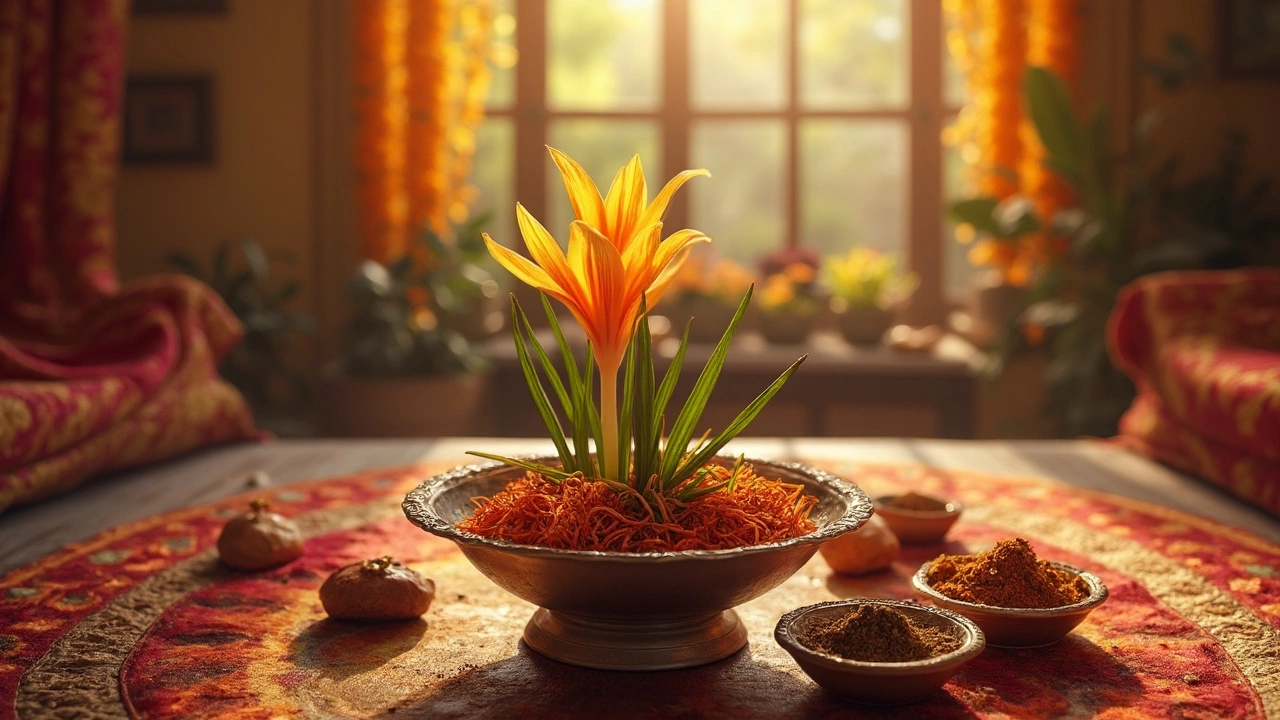
Can You Grow Saffron Crocus at Home?
A lot of home gardeners get super curious—can you actually grow Saffron Crocus in your backyard? Short answer: Yes, but it’s a challenge, especially if you don’t live up north. These purple beauties are native to the cold valleys of Kashmir, where the mornings are misty and summers never really burn. Trying this in most Indian cities means you’ll have to work around heat, humidity, and dry spells.
The crocus bulbs (or ‘corms’) go into the ground around late June to August. They like well-drained, soft soil—not the heavy clay stuff you find in most garden beds. A raised bed or big, wide pots with loose, sandy soil works best. If your city gets way too much rain, you’ll need to cover them or bring them under a roof when the monsoon hits. The bulbs mustn’t stay soggy, or they’ll rot.
- Plant the bulbs about 2–3 inches deep, spaced at least 4 inches apart.
- Pick a spot with plenty of morning sun but not harsh afternoon heat.
- Water after planting, then keep it just moist—never soaked.
The tricky part is timing and patience. Saffron Crocus blooms usually appear after 8–12 weeks, often between late October and November. But here’s the catch: each flower gives just three tiny saffron threads. You’ll need around 150–200 flowers for just a single gram!
Here’s a look at how much payoff you get, and why expensive flower India searches always lead to saffron:
| Number of Flowers | Amount of Saffron |
|---|---|
| 1 | 3 threads |
| 150–200 | 1 gram |
| 150,000 | 1 kilogram |
So, if you’re aiming to produce your own saffron at home, treat it as a fun experiment rather than an investment. If you want the thrill of picking and drying your own red threads, give it a shot. But don’t expect to fill spice jars—think of it as a rare win for your garden bragging rights. If you want a steady saffron supply, you’re way better off buying genuine Kashmiri saffron at the local market.
Other Rare Flowers in India Worth Knowing
If you’re deep into rare flowers India, it’s not just saffron that’ll impress you. There are a bunch of flowers across the country that’ll make any gardener or flower hunter sit up. Some are hard to find, others are tricky to grow, and a few are prized for their looks or fragrance.
- Neelakurinji (Strobilanthes kunthiana): Found mostly on the slopes of the Western Ghats, these blue-purple flowers bloom just once every 12 years. When they do, hills in Kerala and Tamil Nadu turn into a blue sea. Locals and tourists flood places like Munnar to catch this rare show.
- Blue Vanda Orchid: This wild orchid pops up in Northeast India, mostly in places like Assam and Arunachal Pradesh. It’s known for its bright, electric blue color—which is rare not just in India, but worldwide. Because they’re so unique, collectors will pay a lot for healthy, blooming plants.
- Red Vanda (Vanda coerulea var. Red): Found naturally in the Eastern Himalayas, it gets poached and sold by illegal traders, which makes it even rarer in the wild. If you spot it in the wild, consider yourself lucky.
- Yakla Snow Lotus (Saussurea obvallata): Locals in Uttarakhand and Himachal Pradesh call this Brahma Kamal. It’s the state flower of Uttarakhand and blooms only at high altitudes after sunset. Many folks consider it sacred, especially during religious ceremonies.
- Flame Lily (Gloriosa superba): This flower stands out because of its fire-like petals. But heads-up if you try to grow it—parts of the plant are toxic. You’ll spot it in forests of the Western Ghats and parts of Eastern India too.
Most of these rare flowers India have a story behind their price or popularity. Neelakurinji’s odd blooming cycle means locals have a festival every time it appears. Orchids, on the other hand, get their high price from demand—exporters, collectors, and even wedding decorators all want them.
| Flower Name | Main Region | Notable Fact |
|---|---|---|
| Neelakurinji | Western Ghats | Blooms once in 12 years |
| Blue Vanda Orchid | Northeast India | Rare electric blue petals |
| Brahma Kamal | Uttarakhand, Himachal | High-altitude, sacred uses |
| Flame Lily | Western & Eastern India | Toxic, unique fire-red petals |
If you want to get your hands on any of these, prepare for a hunt. State laws protect most, so don’t go plucking them in the wild. If you’re buying, use trusted sources—especially for rare flowers India like orchids, since the illegal trade is still a problem. Gardeners can sometimes grow them at home, but you’ll need the right setup, local climate, and a good dose of patience.
